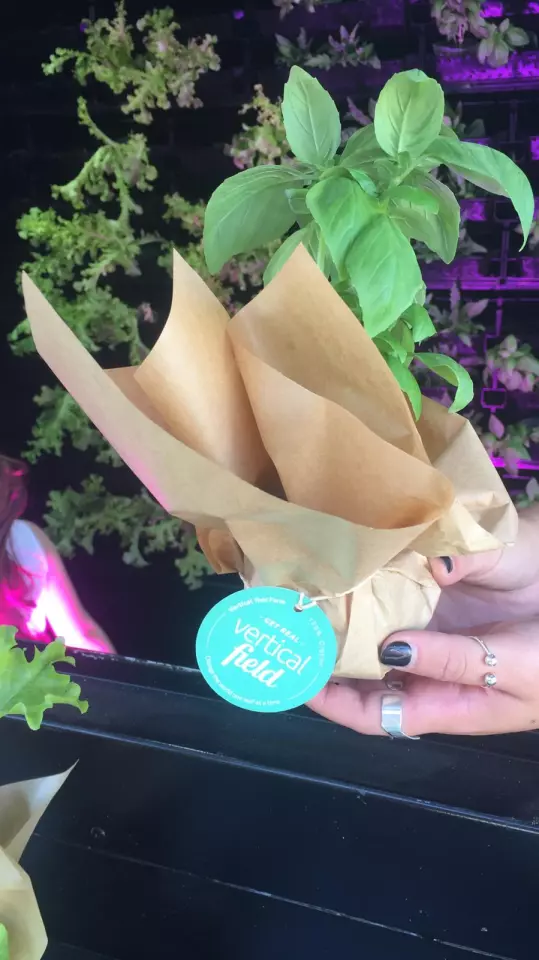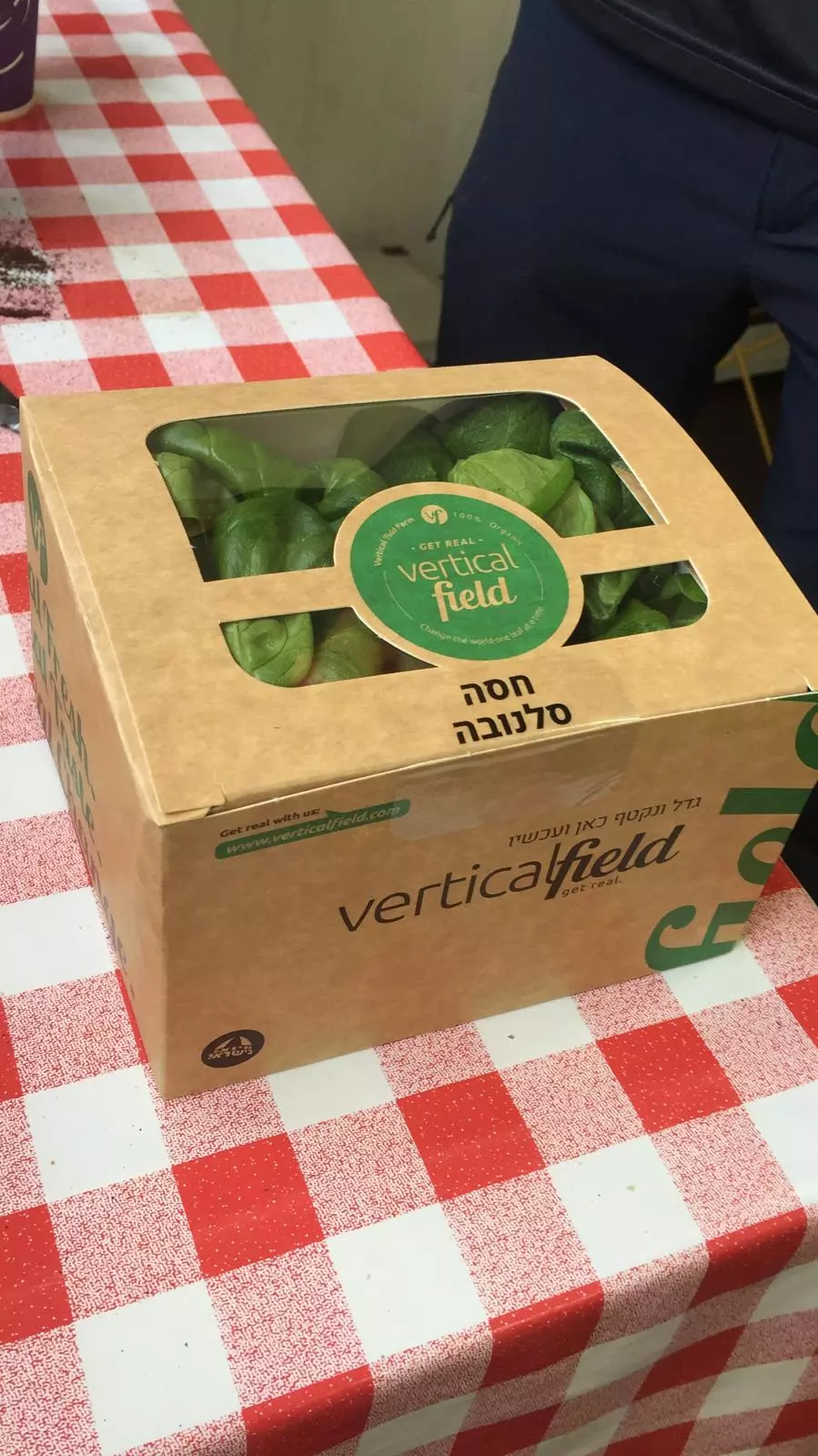Last month we reported that a huge vertical farming operation near Copenhagen in Denmark recently completed its first harvest. That setup uses hydroponics, but the veggies grown in Vertical Field urban farming pods take root in real soil.
Traditional agricultural farming involves the use of a lot of land and resources to grow crops, and then even more resources to harvest and transport the goods – sometimes thousands of miles – to where consumers can get to them.
As well as requiring a fraction of the growing space, controlled-environment agriculture systems such as hydroponics operations can be much more efficient, are no longer bound by season or location, the growing to harvest cycle is reduced and crops could be produced all year, and as with the Copenhagen operation, they can be set up close to where the food is purchased or consumed.
The Vertical Field setup retains many of the advantages of hydroponic vertical farms, but instead of the plants growing in a nutrient-packed liquid medium, the container-based pods treat their crops to real soil, supplemented by a proprietary mix of minerals and nutrients. The company says that it opted for geoponic production "because we found that it has far richer flavor, color, and quality."

"Vertical Field offers a revolutionary way to eat the freshest greens and herbs, by producing soil-based indoor vertical farms grown at the very location where food is consumed," said the company's CEO, Guy Elitzur. "Not only do our products facilitate and promote sustainable life and make a positive impact on the environment, we offer an easy-to-use real alternative to traditional agriculture. Our urban farms give new meaning to the term ‘farm to table,’ because one can virtually pick their own greens and herbs at supermarkets, restaurants or other retail sites."
The recycled and repurposed 20- or 40-ft (6/12-ft) shipping containers used to host the farms can be installed within reach of consumers, such as in the parking lot of a restaurant or out back at the grocery store. Growers can also scale up operations to more than one pod per site if needed, and the external surfaces could be covered in a living wall of decorative plants to make them more appealing.
The vertical urban farms are claimed capable of supporting the production of a wide range of fruits and veggies – from leafy greens and herbs to strawberries and mushrooms, and more. And it's reported to use up to 90 percent less water than a traditional farming setup.
"Through internal experiments with our irrigation method using data from sensors and models we have understood that this is the level of water efficiency," Vertical Field's Noa Winston told New Atlas. "Thus we arrived at an optimal irrigation protocol tailored to the needs of the plant."
According to the company's website, though pesticide-free, the system is not yet considered organic (though Vertical Field is currently in the process of attaining organic certification for the urban farm unit from the USDA). The crops also grow in a bug-free environment.
"The container is kept bug-free because it is sealed off, automated, and we limit human entry to only essential people and essential work," Winston explained. "The container farm itself is not a street vendor or a point of sale, therefore unnecessary or frequent entry does not occur."

Unlike some high-tech farming solutions, staff won't need special training to work with the vertical farm as the automated growing process monitors, irrigates, and fertilizes the crops as they grow thanks to arrays of sensors that continually feed data on climate, soil condition, LED lighting and so on to management software. Each vertical farm unit has its own Wi-Fi comms technology installed to enable operators to tap into the system via a mobile app.
The company told us that, by way of example, one container pilot farm offered a growing space of 400 sq ft (37 sq m) and yielded around 200 lb (90 kg) of produce per month, harvested daily. Lighting remained on for 16 hours per day. We assume that the pods are completely powered from the grid at their respective locations, though the company says that it is looking at ways to make use of solar panels as well as making more efficient use of water.
Vertical Field has been around since 2006, and has built a number of living green walls around the world since then. The soil-based vertical farm initiative was started in 2019.
Recent installations include the first Vertical Field container farm in the US at a restaurant named Farmers & Chefs in Poughkeepsie, New York, which started producing its own crops of fresh greens in mid-April 2020. Last month, following a successful pilot, Israel's largest supermarket chain, Rami Levy, signed an agreement with the company to roll vertical farms into dozens of store locations over the course of the next five years.
"The Rami Levy chain understands the social responsibility that it has for customers as related to food security and supplying the highest quality products while maintaining low prices," said the chain's Yafit Attias Levy. "Our customers bought Vertical Field's produce during the pilot, and returned to purchase more. Therefore, we have decided to expand the partnership with Vertical Field to additional branches of the supermarket, and to offer fresh, high-quality, and pesticide-free produce in a way that increases shelf-life for our customers."

And earlier this month, Moderntrendo SRO – one of the largest agricultural distributors in the Ukraine – signed up for a pilot project that will start with supermarket chain Varus, and potentially expand to other chains.
"We are extremely excited about our partnership with Moderntrendo SRO which has led to the project with Varus and will lead to more projects in the near future with more chains in Ukraine," Vertical Field's Guy Elitzur said. "One of the realizations that have surfaced during the COVID-19 crisis is the need to develop solutions that allow urban residents access to healthy food, with minimal human handling and without depending on transportation and shipping from remote locations. We are delighted to be able to provide - and expand access to - healthy, and high-quality vegetables grown right outside the consumer's door."
As well as grocery outlets and restaurants, the company sees its container-based vertical farms also being installed in hotels, universities, hospitals, and so on, in the future. The video below has more.
Source: Vertical Field









